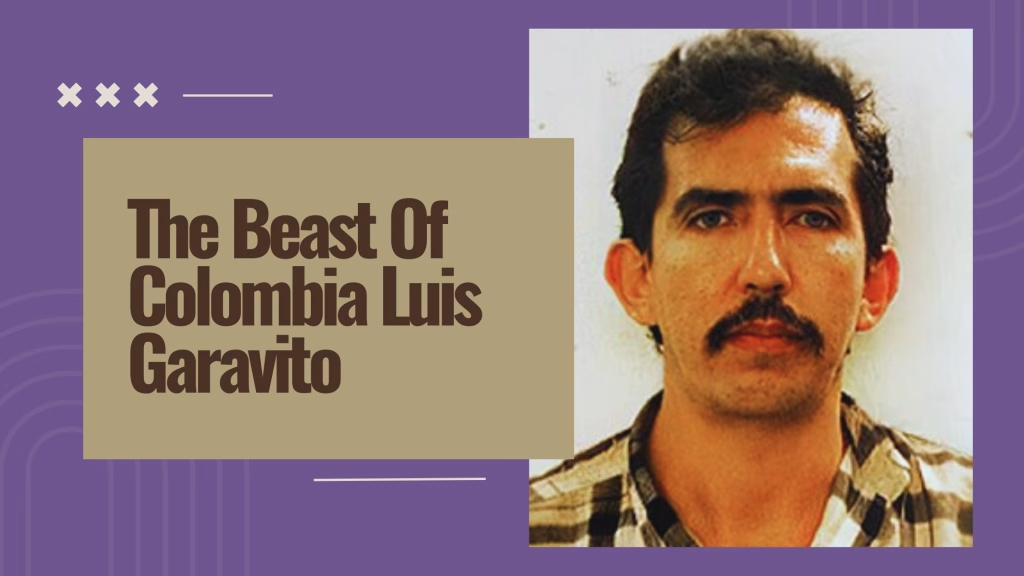Luis Garavito, infamously known as La Bestia (The Beast), is recognized as the most prolific serial killer in modern history, with confirmed murders of 138 children and suspected killings of up to 400. His crimes—marked by extreme sexual sadism, torture, and ritualistic violence—defy comprehension. This article delves into the psychological underpinnings of Garavito’s actions, exploring how a combination of psychopathy, childhood trauma, and societal neglect forged a predator capable of unimaginable cruelty.
The Intersection of Psychopathy and Sadism
Garavito exemplifies the rare convergence of psychopathy and sexual sadism. Psychopaths lack empathy, guilt, and remorse, traits evident in Garavito’s calculated methods. He meticulously targeted vulnerable street children, using disguises and false promises to lure them. His ability to compartmentalize—confessing to crimes while simultaneously blaming the “devil”—highlights a manipulative psyche detached from moral boundaries.
Sexual sadism, a paraphilic disorder where arousal is tied to inflicting pain, fueled his atrocities. Witness accounts describe Garavito’s escalation from molestation to mutilation, suggesting his need for escalating violence to achieve gratification. Forensic psychologists posit that his ritualistic acts, such as placing victims’ severed genitals in their mouths, were attempts to exert absolute dominance, a hallmark of sadistic behavior.
Childhood Trauma: A Catalyst for Violence
Garavito’s self-reported childhood—riddled with physical abuse, sexual violence, and neglect—offers a grim blueprint for his later actions. His father, an alcoholic, allegedly beat him and his siblings, while his mother, described as emotionally cold, exposed him to her prostitution. Such environments can disrupt emotional development, fostering resentment and a warped understanding of power.
While many trauma survivors do not become violent offenders, Garavito’s early exposure to brutality likely normalized aggression. By age 12, he was molesting siblings and neighborhood children, signaling an emerging predatory pattern. His transition from animal torture to human victims aligns with the MacDonald Triad (bedwetting, animal cruelty, pyromania), often linked to future violent behavior.
Societal Complicity: Colombia’s Forgotten Children
Garavito’s killing spree thrived in a Colombia ravaged by civil war (1964–present), where systemic neglect of street children allowed predators to operate with impunity. An estimated 25,000–30,000 homeless minors in 1990s Colombia lacked institutional protection, making them easy targets. Authorities initially dismissed the disappearances, attributing them to guerrilla violence rather than a lone perpetrator.
This societal blindness underscores a broader issue: the dehumanization of marginalized communities. Garavito’s victims, often poor and Indigenous, were seen as disposable—a perception he exploited. The delayed justice (his 22-year sentence, reducible for “cooperation”) further reflects systemic failures in prioritizing vulnerable lives.
Comparative Evil: Garavito vs. Global Serial Killers
Garavito’s crimes invite comparison to other notorious figures:
Pedro López (“The Monster of the Andes”): Another Colombian killer, López murdered over 300 girls across South America. Both men targeted marginalized children, but López claimed religious delusions, whereas Garavito’s motives were purely sadistic.
Jeffrey Dahmer, like Garavito, blended predation with necrophilia. However, Dahmer’s victims were adults, and his crimes lacked the ritualistic torture seen in Garavito’s acts.
Andrei Chikatilo (USSR): The “Rostov Ripper” killed 52 women and children, driven by impotence-fueled rage. Unlike Chikatilo, Garavito displayed meticulous planning and cross-regional mobility.
What distinguishes Garavito is his sheer volume of victims and the prolonged, theatrical nature of their suffering—a grim testament to his unchecked psychopathy.
Lessons and Legacy
Garavito’s case underscores urgent lessons:
- Early Intervention: Identifying and treating childhood trauma could disrupt pathways to violence.
- Legal Reform: Colombia’s 40-year sentencing cap, revised in 2020 to allow life imprisonment for crimes against minors, came too late for Garavito’s victims.
- Societal Vigilance: Protecting marginalized children requires systemic investment in shelters, education, and law enforcement training.
While Garavito remains imprisoned, his eligibility for parole in 2023 sparks outrage. Advocates argue that his existence symbolizes a failure of justice—a reminder that evil, when enabled by apathy, can thrive unchecked.
Conclusion
Luis Garavito’s story is not just one of individual depravity but of a society that allowed a monster to flourish. Understanding his psychology and environment does not excuse his actions but highlights the complex interplay of factors that create such predators. As Colombia grapples with its legacy, the world must confront uncomfortable truths about how vulnerability breeds victimhood and how easily humanity’s darkest impulses can go unchallenged.





Pingback: Pedro López: Monster of the Andes